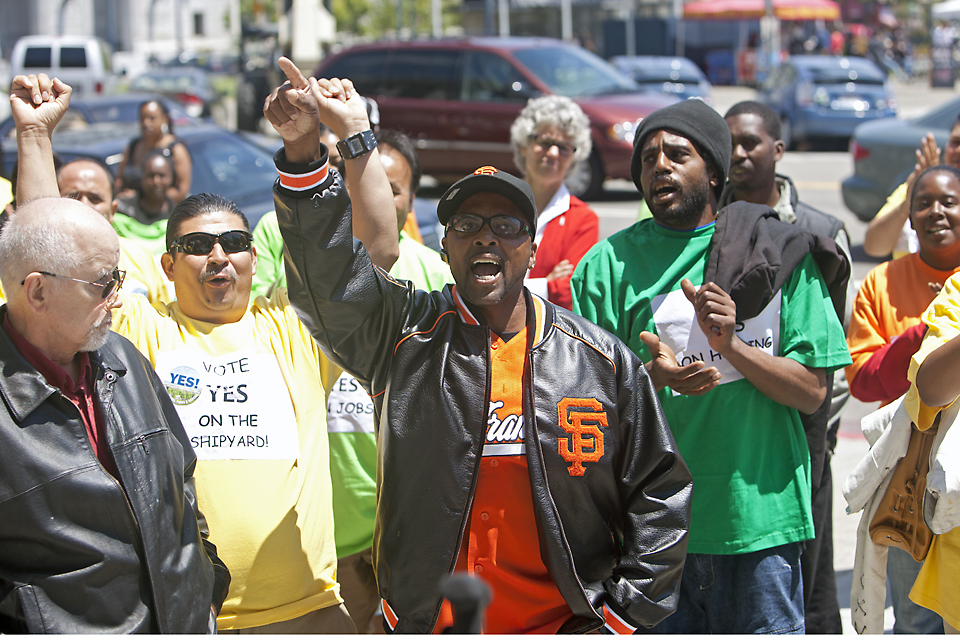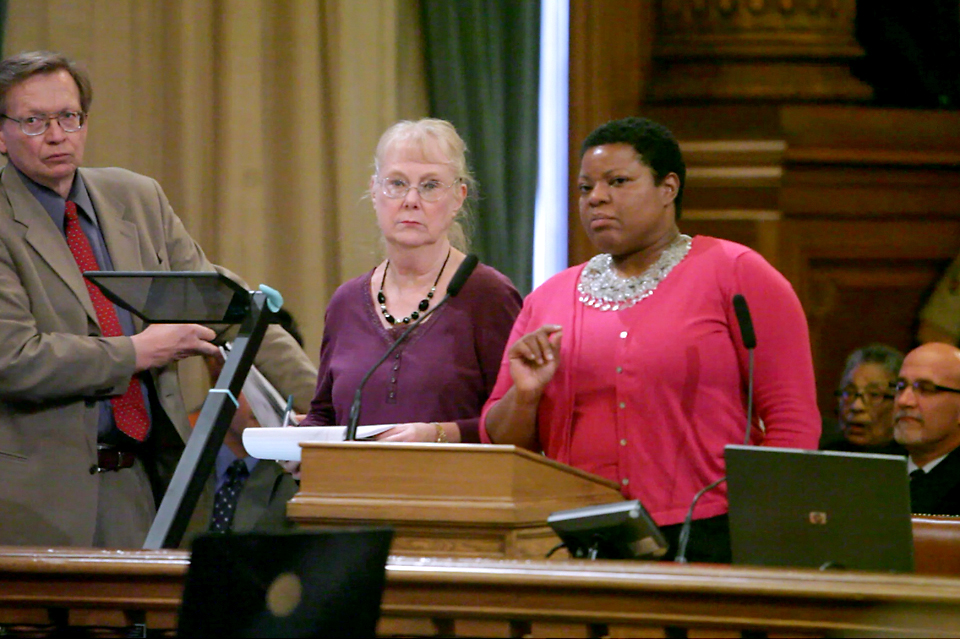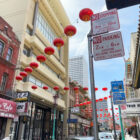This week’s debates over environmental approval for the $8 billion redevelopment planned for Bayview brought to the forefront comparisons with neighborhoods in the Gulf of Mexico — both in terms of environmental and racial justice concerns.
The neighborhood redevelopment plan passed its latest milestone — the contentious environmental impact report — when the Board of Supervisors gave it a thumbs-up after more than nine hours of debate Wednesday morning, by an 8-3 vote.
Ever since the Planning Commission approved the report in June, a slew of environmental activist groups have been arguing that the city has not left enough time for a sufficient clean-up of the area. The Hunters Point Shipyard, a centerpiece of the development plan, was formerly owned by the Navy and remains a toxic Superfund cleanup site.
The comparison with the Gulf Coast was compelling enough to usher two experts who have focused on environmental concerns there to City Hall: Wilma Subra, a MacArthur “genius award”-winning chemist who has testified about BP oil pollution, and Monique Harden, co-director of Advocates for Environmental Human Rights in Louisiana. This week both testified that approval of the Bayview redevelopment should be postponed until further testing is conducted.
On Monday, Harden compared the June decision of the Planning Department, passing the environmental impact report, to decisions in New Orleans that allowed corporate polluters to erode the coastline and make the city more vulnerable to Hurricane Katrina and later the BP oil spill.
“California is the green state, the environmental sustainable state, and Louisiana is sort of like beholden to oil and gas industries,” Harden said. “But a decision like that would never come out of our state, and it’s really just shocking that it came out of the city of San Francisco.”
Subra, who has experience working on toxic areas such as Love Canal and Superfund sites in California, said the containment caps planned for the areas in the Bayview redevelopment zone that have not been completely cleaned up below the soil will be insufficient. That’s because toxins often find way through such caps to the surface. But it’s also because as sea levels rise, flooding could disperse pollutants, rendering the caps useless. Subra said such concerns are deja vu, with what she has seen in coastal New Orleans.
On Monday, the day before the City Hall hearing, Bayview residents turned out to speak about their personal experience and concerns with their toxic surroundings.
Vivien Donahue has lived in Bayview for 30 years. She said she suffers from chronic bronchitis, that her daughter died from cancer at age 28 in 2003 and that frequent nosebleeds and headaches afflict her children. She said she suspects that all these ailments are related to the Superfund site.
“Ever since they had started turning the dirt in 2006, our community has been poisoned from breathing in that dust, and it is our God-given right to have clean air,” Donahue said.
Debate about social justice
A contingent of people wearing “Vote Yes on Jobs” T-shirts argued that the development would provide a much-needed employment boost to the neighborhood.
Michael Patton has lived in Hunters Point for 20 years, five of which he has spent living next to the shipyard. Patton said he looked forward to the influx of jobs that the project would bring. He also made clear that neither his family nor anyone he knew had health problems attributable to the Superfund site.
But other residents opposed the Bayview development — also on the grounds of preserving diversity and preventing gentrification.
Some advocates for local jobs opposed giving the development an environmental go-ahead. Jose Luis Pavon, a representative of a group called People Organized to Win Employment Rights, said the redevelopment would push low-income and multicultural communities out of Bayview.
“I really feel like the culture and the heart of the city, in addition to the health of the city, is in danger right now,” Pavon said. “It’s like the Manhattanization of San Francisco.”
The Bayview district is about 60 percent African American (and 30 percent Asian-Pacific Islander). New Orleans has a 67 percent African American population, according to 2000 census data.
Harden noted that five historic African American neighborhoods no longer exist in Louisiana, implying that better policy would have prevented those dispersals: “We both deal with governments that take no responsibility to ensure that environmental protection is not based on the color of one’s skin.”
Supervisors plan to vote officially to pass the redevelopment on Aug. 3.










